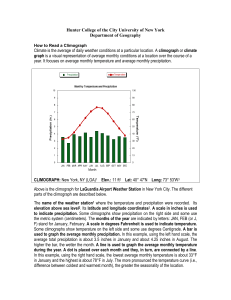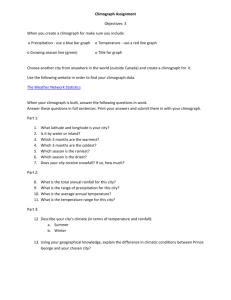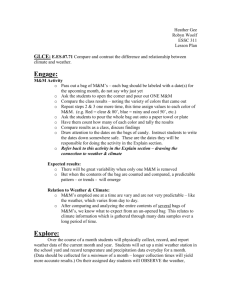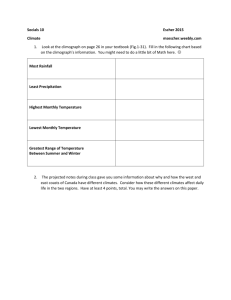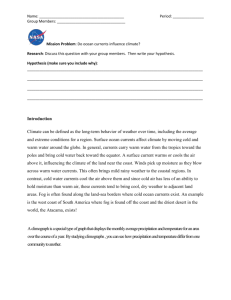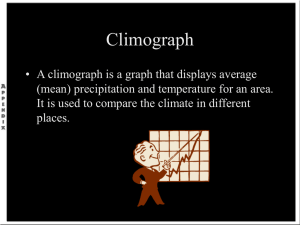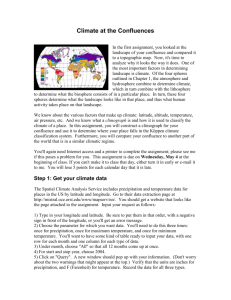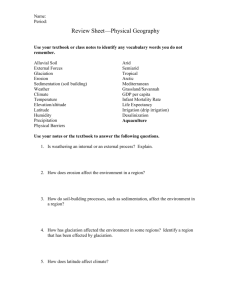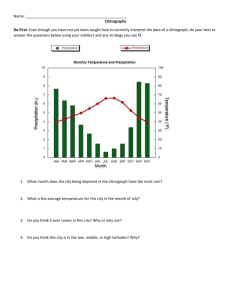Climographs Every location on earth has
advertisement
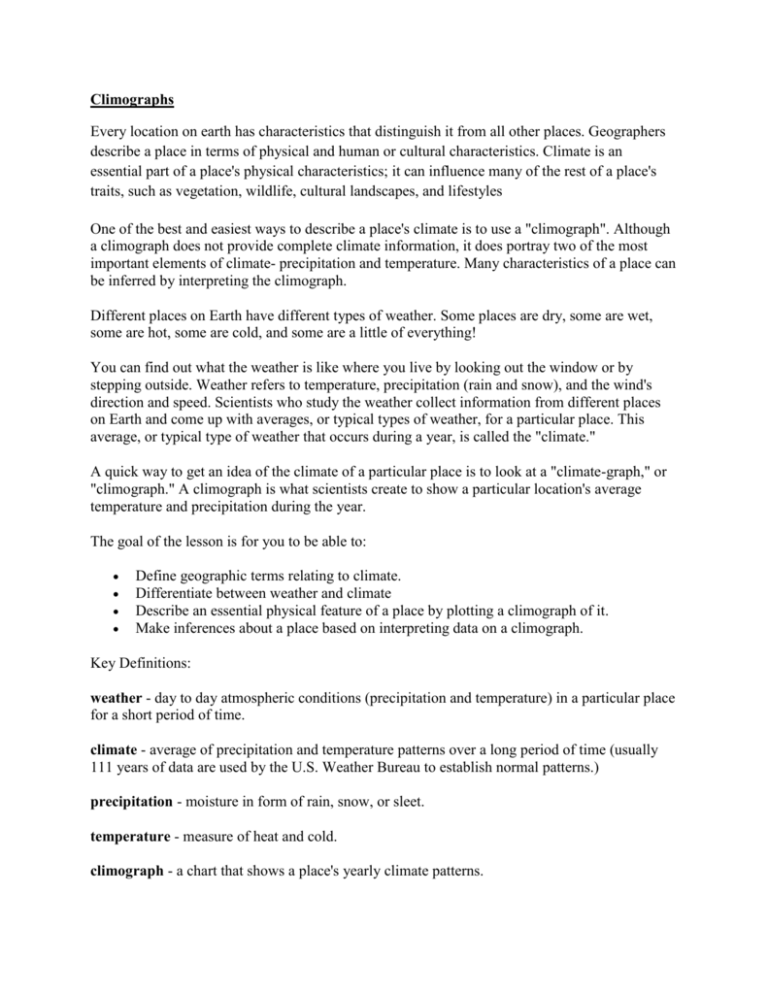
Climographs Every location on earth has characteristics that distinguish it from all other places. Geographers describe a place in terms of physical and human or cultural characteristics. Climate is an essential part of a place's physical characteristics; it can influence many of the rest of a place's traits, such as vegetation, wildlife, cultural landscapes, and lifestyles One of the best and easiest ways to describe a place's climate is to use a "climograph". Although a climograph does not provide complete climate information, it does portray two of the most important elements of climate- precipitation and temperature. Many characteristics of a place can be inferred by interpreting the climograph. Different places on Earth have different types of weather. Some places are dry, some are wet, some are hot, some are cold, and some are a little of everything! You can find out what the weather is like where you live by looking out the window or by stepping outside. Weather refers to temperature, precipitation (rain and snow), and the wind's direction and speed. Scientists who study the weather collect information from different places on Earth and come up with averages, or typical types of weather, for a particular place. This average, or typical type of weather that occurs during a year, is called the "climate." A quick way to get an idea of the climate of a particular place is to look at a "climate-graph," or "climograph." A climograph is what scientists create to show a particular location's average temperature and precipitation during the year. The goal of the lesson is for you to be able to: Define geographic terms relating to climate. Differentiate between weather and climate Describe an essential physical feature of a place by plotting a climograph of it. Make inferences about a place based on interpreting data on a climograph. Key Definitions: weather - day to day atmospheric conditions (precipitation and temperature) in a particular place for a short period of time. climate - average of precipitation and temperature patterns over a long period of time (usually 111 years of data are used by the U.S. Weather Bureau to establish normal patterns.) precipitation - moisture in form of rain, snow, or sleet. temperature - measure of heat and cold. climograph - a chart that shows a place's yearly climate patterns. Example: Below is a climograph for Moose Factory, Canada. To help you learn to read a climograph, the different parts of the climograph have been identified by number. A description of each of the numbered parts is given below. 1. The type of biome associated with the place. 2. The place where the temperature and precipitation were measured. 3. A scale used to indicate inches of precipitation. 4. The months of the year. The letters J, F, M, etc., stand for January, February, March, etc. 5. The temperature scale in degrees Fahrenheit. 6. A bar graph showing the average precipitation for each month. In this example, the average total precipitation is about 1 inch in January and nearly 4 inches in August. (Note: Values for this graph are found on the left-hand scale.) 7. A line graph showing monthly temperature during the year. In this example, the lowest temperature is about -5°F in January and the highest is about 45°F in July. (Note: Values for this graph are found on the right-hand scale.) Activity Complete the following climograph using the following information Average Temperature and Precipitation for Vancouver BC The sampling period for this data covers 30 years from 1961 to 1990 Temperature C Jan 3 Precipitation (mm) Jan 150 Feb 5 March April 6 9 May 12 June 15 July 17 Aug 18 Sept 14 Oct 10 Nov 6 Dec 4 Feb 124 March April 109 75 May 62 June 46 July 36 Aug 38 Sept 64 Oct 115 Nov 170 Dec 179 Analyzing a climograph Use the information on the climograph of Boston you have just made to answer the following questions: 1. What two months in Vancouver average the most percipitation? In which months might the precipitation come in the form of snow? 2. What is the warmest month in Vancouver? 3. What is the difference in degrees between the coldest and warmest months? 4. Does Vancouver have a "dry season"? Why or why not? 5. Which business would you rather own in Vancouver, air conditioning or heating? 6. When would most crops be planted? Why? 7. Would grapefruits and oranges be grown? Why or why not? 8. Would you expect to find a seasonal change of clothing? What kinds of different clothing might be needed? 9. Would you expect to find skiing near Boston? Ice skating? 10. Would you play hockey indoors or out? 11. Would it be common to find outdoor swimming pools? Why? 12. Looking at the climograph, how can you tell Vancouver is located in the Northern Hemisphere? 13. Add all of the months' average precipitation. What would be Vancouver’s average yearly rainfall in millimeters?
